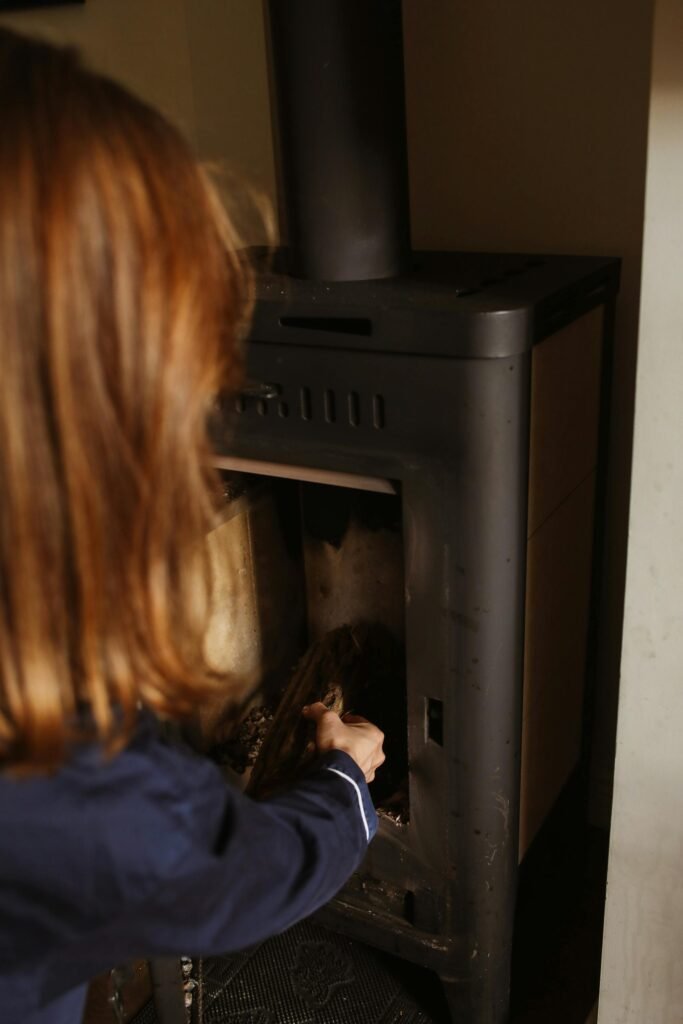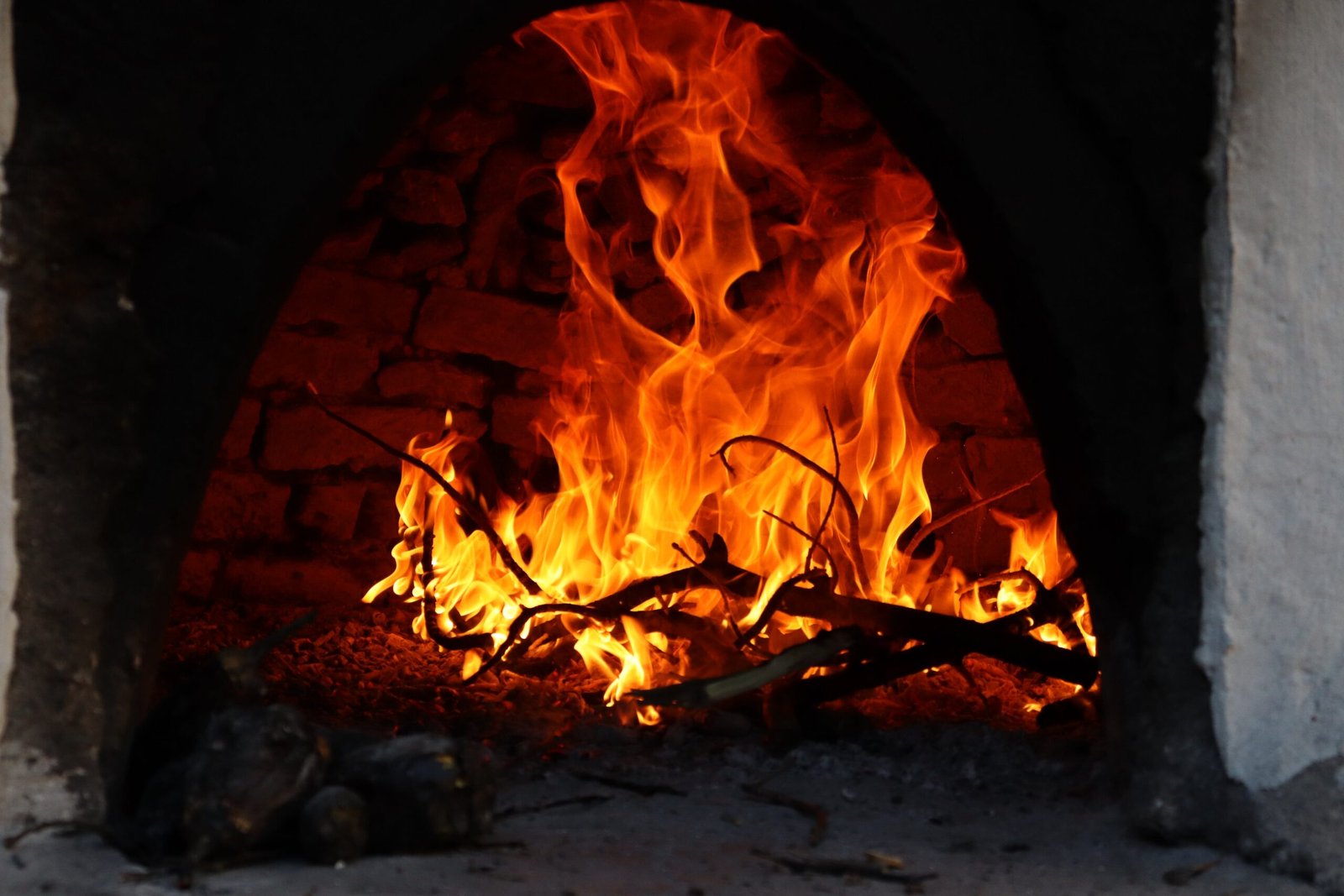Get your fireplace ready for the winter season with these essential maintenance tips. As the chilly temperatures start to roll in, it’s time to ensure that your hearth is in prime condition to keep you warm and cozy. From cleaning out the chimney to inspecting the firebox, this article will guide you through the necessary steps to prepare your fireplace for the winter ahead. So grab a cup of hot cocoa and let’s get your fireplace winter-ready!

This image is property of images.pexels.com.
Buy Fireplace Accessories Online
Inspecting the Fireplace
Checking for visible damage
When inspecting your fireplace, the first step is to look for any visible damage. This includes checking for cracks or loose bricks in the firebox, as well as any signs of wear and tear on the exterior of the fireplace. Look out for any discoloration or chipping, as these can be indications of more serious issues. It’s important to address any visible damage before using the fireplace to ensure safe operation.
Examining the chimney
Next, it’s important to thoroughly examine the chimney. Look for any cracks or crumbling mortar on the exterior, as these can lead to water damage or even structural instability. Inspect the chimney cap for any signs of damage, such as rust or missing parts. Additionally, check the flashing around the chimney to ensure it is secure and in good condition.
Inspecting the damper
The damper is a crucial component of your fireplace, as it helps regulate airflow and prevent drafts when the fireplace is not in use. Take the time to inspect the damper, checking that it opens and closes properly. Look for any signs of rust or damage, as this can affect the operation of the damper. A faulty damper can result in poor ventilation and difficulty starting or maintaining a fire.
Cleaning the firebox
When inspecting the firebox, it’s important to make sure it is clean and free from any debris. Remove any ashes or remnants of previous fires, and check for any loose bricks or mortar. Cleaning the firebox not only improves the overall appearance of your fireplace but also helps ensure proper air circulation. A clean firebox can also prevent the buildup of creosote, a byproduct of burning wood that can be highly flammable and dangerous if not properly maintained.
Get Your Fireplace Maintenance Tools Here
Cleaning the Chimney
Why chimney cleaning is important
Regular chimney cleaning is essential for maintaining the safety and efficiency of your fireplace. Over time, soot and creosote can accumulate in the chimney, increasing the risk of chimney fires. Additionally, blockages caused by debris or animal nests can prevent proper ventilation, leading to poor indoor air quality and potential carbon monoxide buildup. By scheduling regular chimney cleanings, you can minimize these risks and enjoy a safer and more efficient fireplace.
Scheduling a professional chimney sweep
While there are DIY chimney cleaning methods available, it is highly recommended to hire a professional chimney sweep for a thorough cleaning. Professional chimney sweeps have the experience, specialized tools, and knowledge to effectively remove soot, creosote, and other debris from your chimney. They can also inspect the chimney for any damage or potential issues that need to be addressed. Schedule a professional chimney sweep annually or more frequently if you use your fireplace regularly.
Removing loose soot and creosote
Before scheduling a professional chimney sweep, there are some steps you can take to help remove loose soot and creosote from your chimney. Use a chimney brush to gently scrub the interior walls of the chimney, starting from the bottom and working your way up. Be careful not to scratch or damage the chimney liner. Use a vacuum or a chimney cleaning brush with an extension rod to clean the chimney from the top. This will help remove any loose debris and make the professional cleaning more effective.
Cleaning the chimney cap and spark arrestor
As part of your chimney cleaning routine, don’t forget to clean the chimney cap and spark arrestor. These components help prevent animals, debris, and sparks from entering the chimney and causing damage. Use a brush or a soft cloth to remove any dirt, leaves, or other debris from the chimney cap. Inspect the spark arrestor for any signs of damage or blockage and clean it accordingly. Keeping these components clean and in good condition will help ensure the efficiency and safety of your fireplace.

This image is property of images.pexels.com.
Clearing the Ashes
Safely removing ashes
When clearing the ashes from your fireplace, it’s important to do so safely to avoid any potential hazards. Make sure the ashes are completely cool before attempting to remove them. Use a metal shovel or scoop to carefully scoop the ashes into a metal container. Do not use a vacuum cleaner or plastic bucket, as hot embers can cause these materials to melt or ignite. Once you have removed the ashes, place the metal container outside and away from any flammable materials until you can dispose of them properly.
Knowing when to clean ashes
While it’s important to remove excess ashes regularly, it’s equally important not to remove them too soon. A layer of ash acts as insulation and helps maintain the heat in the firebox. It also helps control the airflow and provides a stable base for the fire. It’s recommended to keep a layer of ash that is about one inch deep. However, if the ash starts to accumulate more than that, it’s time to clean them out to prevent airflow restriction and potential damage to the fireplace.
Emptying the ash dump
Many fireplaces are equipped with an ash dump, a small door located in the floor of the firebox that leads to an ash pit below. This is a convenient feature that allows you to easily remove ashes without having to access the firebox itself. To empty the ash dump, open the door and let the ashes fall into a metal container. Be cautious of any remaining embers, as they can still be hot and cause injury or start a fire. Make sure to dispose of the ashes safely as per local regulations.
Using fireplace ash for gardening
Believe it or not, fireplace ash can be used as a valuable resource in your garden. Wood ash is rich in nutrients and minerals, such as potassium, calcium, and magnesium. These minerals can help raise the pH level of acidic soils and improve overall soil fertility. However, it’s important to use ash in moderation, as excessive use can negatively impact the pH balance and nutrient levels in the soil. Consult with a local horticulturist or gardening expert to determine the appropriate amount of ash to use in your specific garden.




